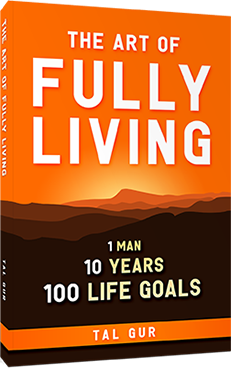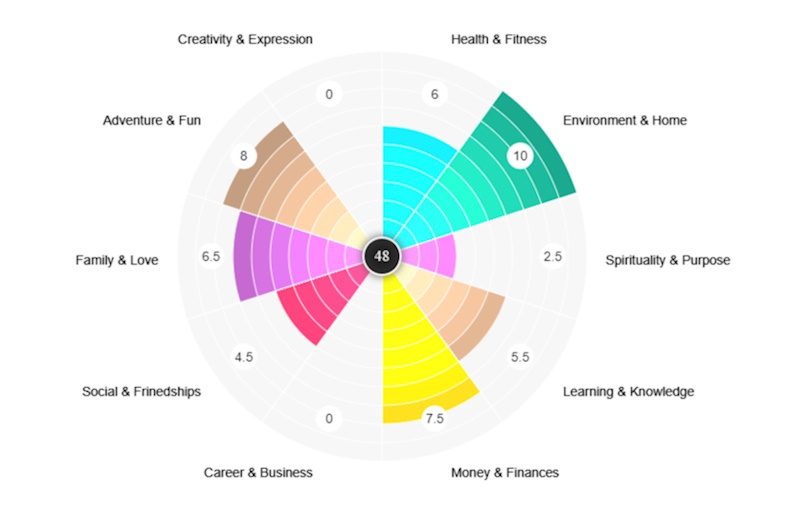Habits of a Happy Brain: Summary Review
Have you ever wondered why certain habits make you feel happier, while others leave you feeling unfulfilled? In Habits of a Happy Brain, author Loretta Graziano Breuning, PhD, explores the intricate world of brain chemistry and offers practical strategies to harness your mind's natural potential for joy.
What is the Book About?
In Habits of a Happy Brain, Breuning delves into the science behind our brain's "happy chemicals"—dopamine, serotonin, oxytocin, and endorphins. She explains how these neurotransmitters influence our moods and behaviors, and how our daily habits can either enhance or inhibit their production. By understanding the roles these chemicals play, readers can take conscious steps to stimulate their release, leading to increased happiness and well-being.
The book provides a 45-day plan designed to help readers rewire their neural pathways and develop habits that promote the consistent release of these feel-good chemicals. Through a series of simple, actionable exercises, Breuning guides readers in creating new, positive habits while diminishing the influence of negative ones. This practical approach empowers individuals to take control of their happiness by leveraging the brain's natural processes.
Book Details
Print length: 238 pages
Language: English
Publication date: December 16, 2015
Genre: Self-help / Psychology
Book Author
Core Theme
At its core, Habits of a Happy Brain emphasizes that our feelings of happiness are deeply rooted in the brain's chemistry. Breuning elucidates how the four primary "happy chemicals"—dopamine, serotonin, oxytocin, and endorphins—are released in response to specific behaviors and experiences. For instance, dopamine is associated with the joy of achieving goals, while oxytocin is linked to the comfort of social bonds. By recognizing the triggers for these chemicals, individuals can intentionally cultivate behaviors that promote their release.
The book argues that while our brains have evolved to seek short-term bursts of these chemicals for survival purposes, we can reprogram our neural pathways to develop habits that lead to sustained happiness. Breuning provides insights into how repetitive actions and thoughts can strengthen neural connections, making positive behaviors more automatic over time. This understanding empowers readers to break free from unproductive patterns and establish new routines that foster long-term well-being.
Main Lessons
A few impactful summary lessons from *Habits of a Happy Brain*:
1. Unhappy Chemicals Are Just as Important as Happy Ones
Our brains are wired to balance happiness and unhappiness for survival. The chemicals that make you unhappy, like cortisol, play a vital role in keeping you safe by signaling potential threats or discomfort. While happy chemicals like dopamine, oxytocin, endorphins, and serotonin reward you for various actions, the unhappy chemicals push you to address challenges and protect yourself. For instance, cortisol is released when you are hungry, prompting you to find food. The problem often lies not in these chemicals themselves but in the way our modern brain interprets minor stressors as major threats. This is why people sometimes eat out of boredom or stress; the brain’s survival mechanisms are constantly on alert. Understanding that unhappiness is an essential part of your mental ecosystem helps you appreciate its role in motivating you to make positive changes.
2. Chasing Permanent Happiness Is a Lost Cause
Happiness is not a permanent state, and the pursuit of constant bliss is futile. Our brains are designed to adapt through a process known as habituation, meaning the joy you feel from a new experience diminishes over time. This adaptation ensures that you don’t become complacent, but it also means that repeating the same pleasurable activities will eventually feel less exciting. For example, going to your favorite restaurant again may not be as thrilling as the first visit. This diminishing return is natural and helps push us to seek new experiences rather than stagnating. Accepting that happiness is fleeting allows you to focus on growth and variety instead of relentlessly pursuing an unattainable state of perpetual joy.
3. You Have the Power to Choose Your Own Happiness
Life is a series of choices, and one of the most powerful ones is deciding to take control of your happiness rather than letting others dictate your mood. Your brain often exaggerates risks because modern threats are seldom life-threatening, but letting others make decisions for you leads to a loss of autonomy and satisfaction. While it’s tempting to blame others when things go wrong, taking responsibility for your choices—even the small, everyday ones—reinforces a sense of control and self-worth. When you make a conscious decision, whether it’s choosing a career path or deciding how to spend your weekend, you are actively shaping your mental landscape. By choosing for yourself rather than allowing external pressures to dictate your actions, you develop a more resilient and fulfilled mindset.
4. Your Brain Craves New Neural Pathways for Lasting Happiness
To maintain happiness, you must continually create new neural pathways. Your brain naturally prefers well-trodden paths because they’re familiar, but these old patterns lose their ability to generate the same level of happiness over time. Developing new habits, even when it feels awkward at first, challenges your brain to grow. For instance, small victories like completing a minor task can release dopamine, encouraging you to keep going. The trick is to embrace the discomfort of forming new habits rather than reverting to the old, less satisfying ones. By consciously choosing new, positive actions and repeating them daily, you strengthen new neural connections that can lead to sustainable happiness.
5. Embrace Small Victories to Boost Your Dopamine
Dopamine, the brain’s reward chemical, thrives on progress and accomplishment. To maintain dopamine levels, focus on setting and celebrating small, attainable goals rather than aiming for grand, distant achievements. This could be as simple as finishing a chapter in a book or tidying up a small area of your living space. Breaking tasks into manageable steps not only makes them less daunting but also triggers a series of dopamine releases as you achieve each milestone. Cultivating this habit prevents burnout and keeps you motivated. The sense of accomplishment, however minor, fuels your brain’s natural reward system and keeps you moving forward with enthusiasm.
6. Social Bonds Are Essential for Emotional Well-Being
Oxytocin, often called the bonding hormone, is released when you feel a sense of trust and connection. This chemical is essential for forming social alliances, which historically improved survival chances. In modern life, fostering relationships through simple gestures like sharing a laugh or offering support can trigger oxytocin, making you feel more secure and valued. Even interactions with pets or participating in community events can boost oxytocin levels. Nurturing these connections doesn’t just create warmth and belonging; it also fortifies your emotional resilience, making challenges easier to navigate.
7. Laughter and Movement Are Your Endorphin Boosters
Endorphins serve as your body’s natural painkillers, releasing during activities like exercise or laughter. They provide temporary relief from discomfort, allowing you to push through challenging situations. Incorporating fun physical activities or finding humor in everyday moments can create a burst of endorphins, giving you a sense of well-being and euphoria. However, it’s important not to rely on extreme methods, like overexercising, to chase these fleeting highs. Instead, balance light-hearted activities and moderate physical challenges to keep your endorphin levels healthy and sustainable.
8. Confidence Comes from Embracing Your Unique Strengths
Serotonin, the chemical linked to pride and social importance, surges when you feel valued and respected. Rather than chasing external validation, practice self-acknowledgment and celebrate your progress. Engage in activities that make you feel competent and appreciated, whether it’s completing a project at work or mentoring someone. Accepting your social standing and feeling good about your contributions to your community can naturally boost serotonin. When you focus on building genuine self-confidence rather than comparing yourself to others, you cultivate a steady stream of this essential chemical, enriching your sense of personal worth.
9. Use Unhappiness as a Tool for Personal Growth
Negative emotions like fear, sadness, or frustration are not enemies but signals from your brain urging you to address problems or protect yourself. Instead of suppressing these feelings, learn to interpret them as opportunities for self-improvement. For instance, feeling anxious about a presentation can prompt you to prepare more thoroughly. Acknowledging the value of these uncomfortable emotions prevents you from becoming overwhelmed by them. This mindset shift transforms unhappiness from a source of distress to a motivator for positive change.
10. Balance All Four Chemicals for Holistic Happiness
True well-being arises from balancing dopamine, endorphin, oxytocin, and serotonin rather than over-relying on one. Diversifying your happiness sources means setting achievable goals, staying physically active, nurturing social connections, and building self-esteem. When your approach to happiness includes all four chemicals, you create a more stable and enduring sense of contentment. This balanced method not only helps you avoid dependency on any single pursuit but also fosters resilience against life’s inevitable challenges. By integrating varied positive experiences, you nurture a more comprehensive and sustainable happiness.
Key Takeaways
Key summary takeaways from the book:
- Understanding the roles of dopamine, serotonin, oxytocin, and endorphins is crucial to managing one's happiness.
- Developing new, positive habits requires consistent practice over a period of 45 days to rewire neural pathways.
- Small, intentional actions can stimulate the release of happy chemicals, leading to improved mood and well-being.
- Recognizing and altering thought patterns can help in breaking the cycle of negative habits.
- Building social connections and setting achievable goals contribute significantly to long-term happiness.
Book Strengths
Habits of a Happy Brain excels in translating complex neuroscience into accessible, actionable insights. Breuning's clear explanations and relatable examples make it easier for readers to grasp how their daily habits influence brain chemistry. The inclusion of practical exercises at the end of each chapter encourages active participation, enabling readers to apply the concepts immediately and observe tangible results in their pursuit of happiness.
Who This Book Is For
This book is ideal for individuals seeking to understand the biological underpinnings of their emotions and looking for practical strategies to enhance their happiness. Whether you're interested in personal development, psychology, or simply want to cultivate a more joyful life, Breuning's insights offer valuable guidance. It's particularly beneficial for those willing to engage in self-reflection and commit to implementing new habits over a sustained period.
Why Should You Read This Book?
Reading Habits of a Happy Brain provides you with the knowledge and tools to take control of your emotional well-being. By understanding the science behind happiness and applying Breuning's 45-day plan, you can rewire your brain to adopt habits that promote lasting joy. This book empowers you to make conscious choices that align with your goals for a happier, healthier life.
Concluding Thoughts
Habits of a Happy Brain offers a compelling blend of neuroscience and practical advice, making it a valuable resource for anyone looking to enhance their happiness through intentional habit formation. Breuning's approachable writing style and actionable strategies demystify the complex processes of the brain, providing readers with a clear roadmap to increased well-being.
By committing to the exercises and insights presented in this book, you can embark on a transformative journey toward understanding and improving your brain's natural capacity for happiness. It's an invitation to take charge of your emotional health and build a more fulfilling life through the power of positive habits.
→ Get the book on Amazon or discover more via the author's website or social channels.
* The publisher and editor of this summary review made every effort to maintain information accuracy, including any published quotes, lessons, takeaways, or summary notes.
Chief Editor
 Tal Gur is an author, founder, and impact-driven entrepreneur at heart. After trading his daily grind for a life of his own daring design, he spent a decade pursuing 100 major life goals around the globe. His journey and most recent book, The Art of Fully Living, has led him to found Elevate Society.
Tal Gur is an author, founder, and impact-driven entrepreneur at heart. After trading his daily grind for a life of his own daring design, he spent a decade pursuing 100 major life goals around the globe. His journey and most recent book, The Art of Fully Living, has led him to found Elevate Society.

















